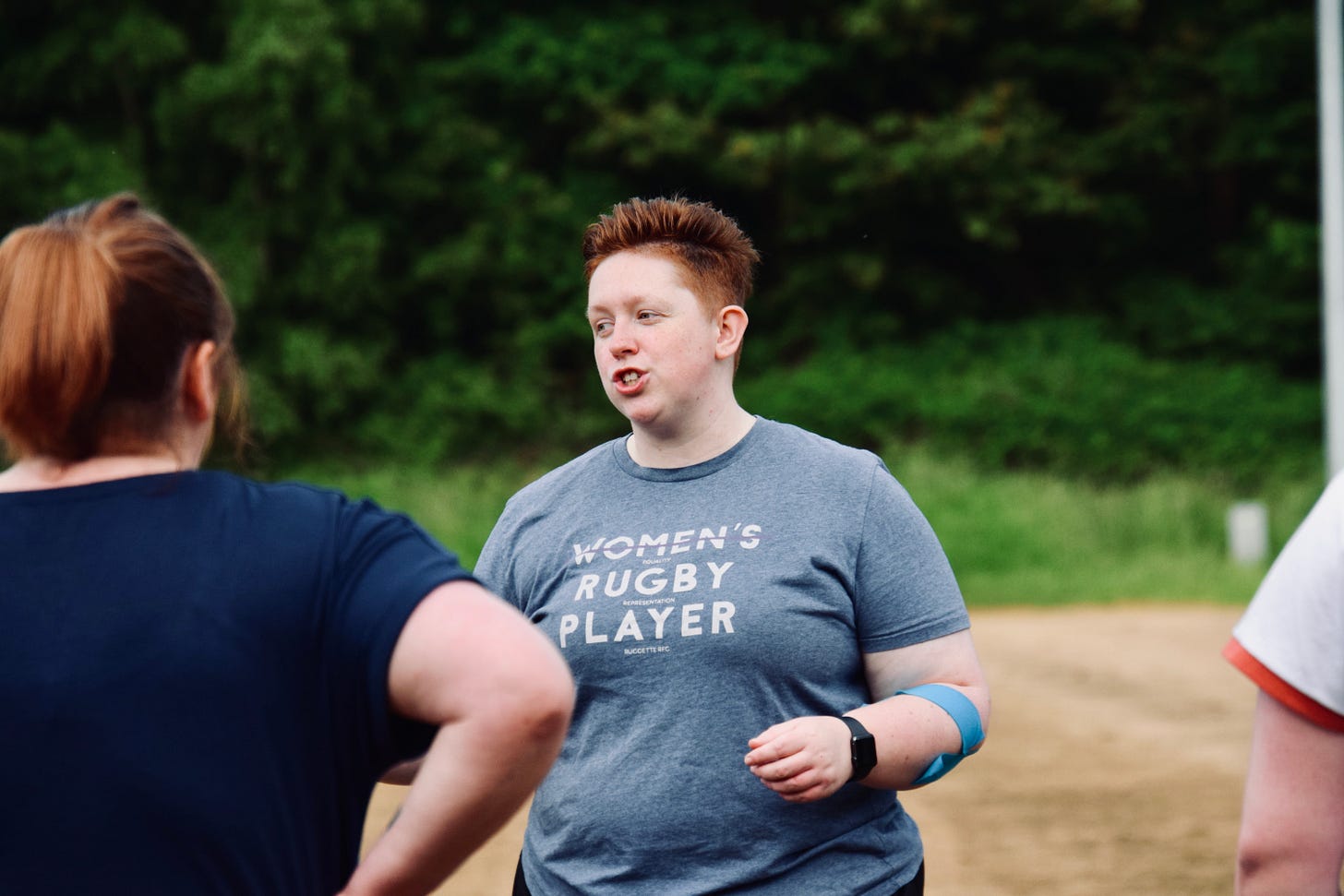Coaching solo: some tips
Coaching alone can be challenging, here's some of my thoughts on how to manage it
I’ve coached solo and with co-coaches. Both require planning. I don’t just mean you plan what the players are going to do, but you think about your actions as a coach.
Coaching solo means you have to rely on your own observations and make sure you challenge your biases.
Coaching alone when there’s a large number of people at a session adds other challenges on top of the existing ones.
Here are a few of my tips that I’ve learnt:
Always plan for extra people
If you know you’ve got a large number of people at training, plan for what happens if you get a few extra that are unexpected.
For me, this usually meant setting up additional playing areas. When setting up more playing areas, try and keep them close together so you can move between the two more easily.
If there was too many per team, split the groups and have two of the same activities running at the same time.
I’ve found it’s easier to run duplicate activities. However, if you have two similar games or skill areas that you planned to run one after the other, you can also split players between these two activities. Then, swap the groups over.
You can also run slightly different activities with the same focus but change how difficult each one is. You can then split players into different groups depending on their level and what level they’d like to train at.
When setting up duplicate activities, I’ve often split the team into smaller groups for skill activities or smaller games. Then regrouped them for larger games.
It’s easier to plan for alot of people and then scale it down than to have more than you expected and quickly react.
Deligate to your leaders
If you’re coaching on your own, whether it’s large numbers or not. Don’t expect to be everywhere and don’t expect to see everything.
Use your leadership team. Give them a brief ideas of the session, including the session aims and what activities are planned.
If you’re splitting players into different groups, try and put senior players or leaders within each group.
You don’t have to be in two places at once, trust in your senior leadership. It also helps develop their skills.
If you’ve been observing one group, move to the next group and check in with the senior players. Ask for some reflections. You can do this whilst an activity is ongoing or during a water break.
If you’ve got people who are watching the session, for example injured players, you can also involve them in the session to keep them learning on the sidelines.
Get them to introduce a game, keep score or come up with a new game rule based on what they’ve spotted. You can also ask them to give feedback and praise to a group of players.
As well as developing them, it gives you chance to check in with other players or set up the next activity.
Don’t be afraid to scale things down
It can be easy with a large group of players to have large scale activities only. It feels more controllable as a coach.
However, think about how much time the players are actually getting to track a ball carrier or pass the ball.
Having smaller activities means the players get more opportunities to practice skills. Think about organising parts of the session that are 1v1 or 2v2. Instead of getting players to queue up for their turn, think about what you can run that gets everyone active at the same time.
For example:
If you’re working on tracking, the first part of tackling, pair players up and get them to take turns tracking and touch tackling each other in a small space.
You can progress this by using a tag belt or bib tucked into the shorts for the defender to wrap and grab, or by asking the defender to low grab and wrap.
If you’ve got 18 people at training, you could have 9 pairs activities at the same time. Whilst this goes on, you can walk around and give feedback or additional challenges.
If you’re unable to sign up for regular paid subscription, you can still buy me a coffee.



